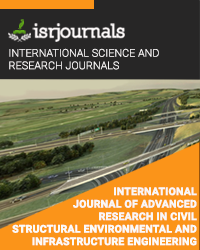to increase the strength of concrete by adding seashell as admixture
M. Mageswari ,C.R.Manoj,M.Siddarthan,T.P.Saravanan,G.Princepatwa
Published in International Journal of Advanced Research in Civil,Structural,Environmental and Infrastructure Engineering and Developing
ISSN: 2320-723X Impact Factor:1.7 Volume:2 Issue:2 Year: 06 April,2016 Pages:165-174

Abstract
As concrete is ubiquitous and its history can be traced to ancient Egypt and Rome, it is often falsely perceived as a "simple" material. Actually, the microstructure of concrete tends to be highly complex. Moreover, the structure and the properties of this composite material can change over time. Most modern concrete structures are reinforced with steel, since concrete itself displays relatively low strength when loaded in tension. While steel reinforced concrete is obviously a widely used, cost-effective construction material, degradation of such structures has become a major problem in many parts of the world.
Kewords
Cement, Water
Reference
1.Horne, F. R. 2007.” How are sea shells or snail shells formed” SCIENTIFIC AMERICAN, January 2007, pg.no. 94. 2.K. Melcher et al "A Gate Latch Lock Mechanism for Hormone Signalling by Abscisic Acid Receptors," Nature 462, pg.no 602,608 .2009. 3.Aniedi O. Ette, Linus O. Asuquo, Ime A. Ebong and Benjamin R.Etuk “MECHANIZATION OF CASSAVA PEELING” Research Journal in Engineering and Applied Sciences, 2012 . 4.Shetty M.S. “Concrete Technology Theory and Practice” S.Chand & Company New Delhi.

